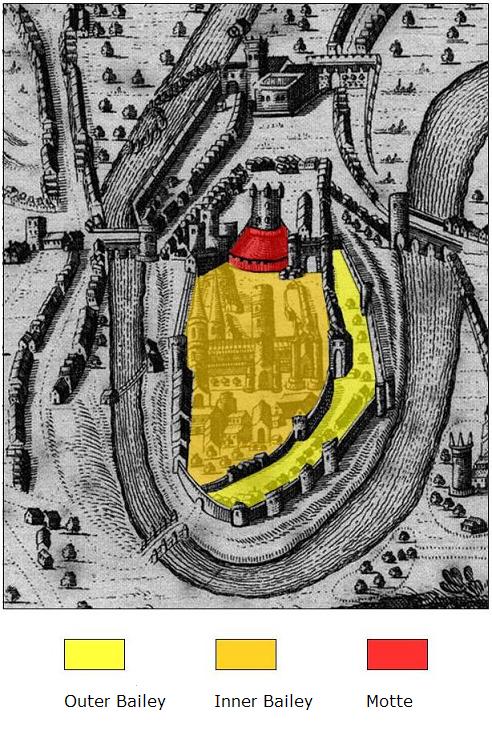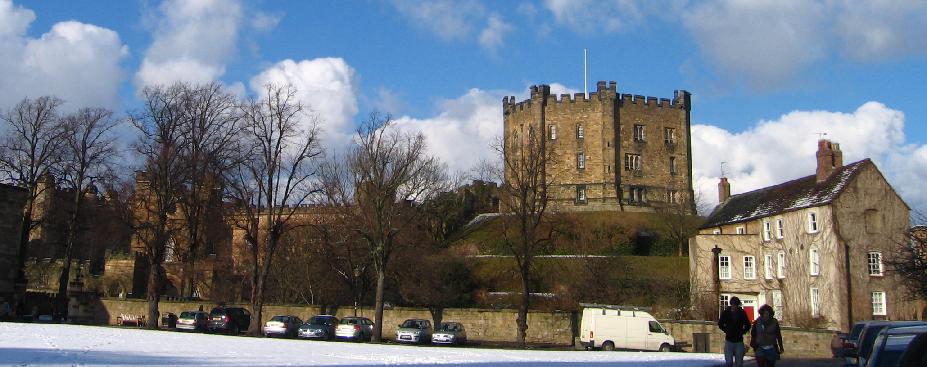Durham Castle has enjoyed a long history of continuous use, and is now home to students of University College, Durham.
Beginnings
Construction of the Castle began in 1072 under the orders of William the Conqueror, six years after the Norman Conquest of England, and soon after the Normans first came to the North.
The construction took place under the supervision of the Earl of Northumberland, Waltheof, until he rebelled against William and was executed in 1076.
The castle then came under the control of the Bishop of Durham, Walcher, who purchased the earldom and thus became the first of the Prince-Bishops of Durham, a title that was to remain until the 19th century, and was to give Durham a unique status in England.
It was under Walcher that many of the Castle’s first buildings were constructed. As was typical of Norman castles, it consisted of a motte (mound) and an inner and outer bailey (fenced or walled area). Whether the motte and inner bailey were built first is unknown.
There is also debate about whether or not Durham Castle was originally a stone or a wooden structure. Historic sources mention that its keep (fortified tower) was built of wood, but there is enough archaeological evidence to indicate that even in the late 11th century when it was first built, it had numerous stone buildings.

Although this 17th century illustration of Durham is schematic, it shows the way in which the Castle defenses covered the whole of the Durham Peninsula. The inner and outer baileys and the motte can clearly be seen.
Pre-Norman History of the Castle
Archaeological evidence suggests that an Anglo-Saxon defensive structure predated the Norman Castle. This was not unusual, and in fact was the case in Dover, London, Exeter, Hastings, Winchester, and Pevensey, where castles were constructed after the Norman Conquest.
The Need for Durham Castle
In defensive terms, Durham Castle was of strategic importance both to defend the troublesome border with Scotland and to control local English rebellions, which were common in the years immediately following the Norman Conquest, and led to the so-called Harrying of the North by William the Conqueror in 1069.
The Historia Regum, a literary work about the history of the English kings written in 1136, mentions that the Castle was constructed “to keep the bishop and his household safe from the attacks of assailants”. This makes sense – Robert de Comines (or Cumin), the first earl of Northumberland appointed by William the Conqueror, was brutally murdered along with his entourage in 1069.
The Threat of Foreign Invasions
The threat to Durham was not simply from locals who resented the Normans’s presence – there was also the looming threat of invasions from the Scots and the Danes.

